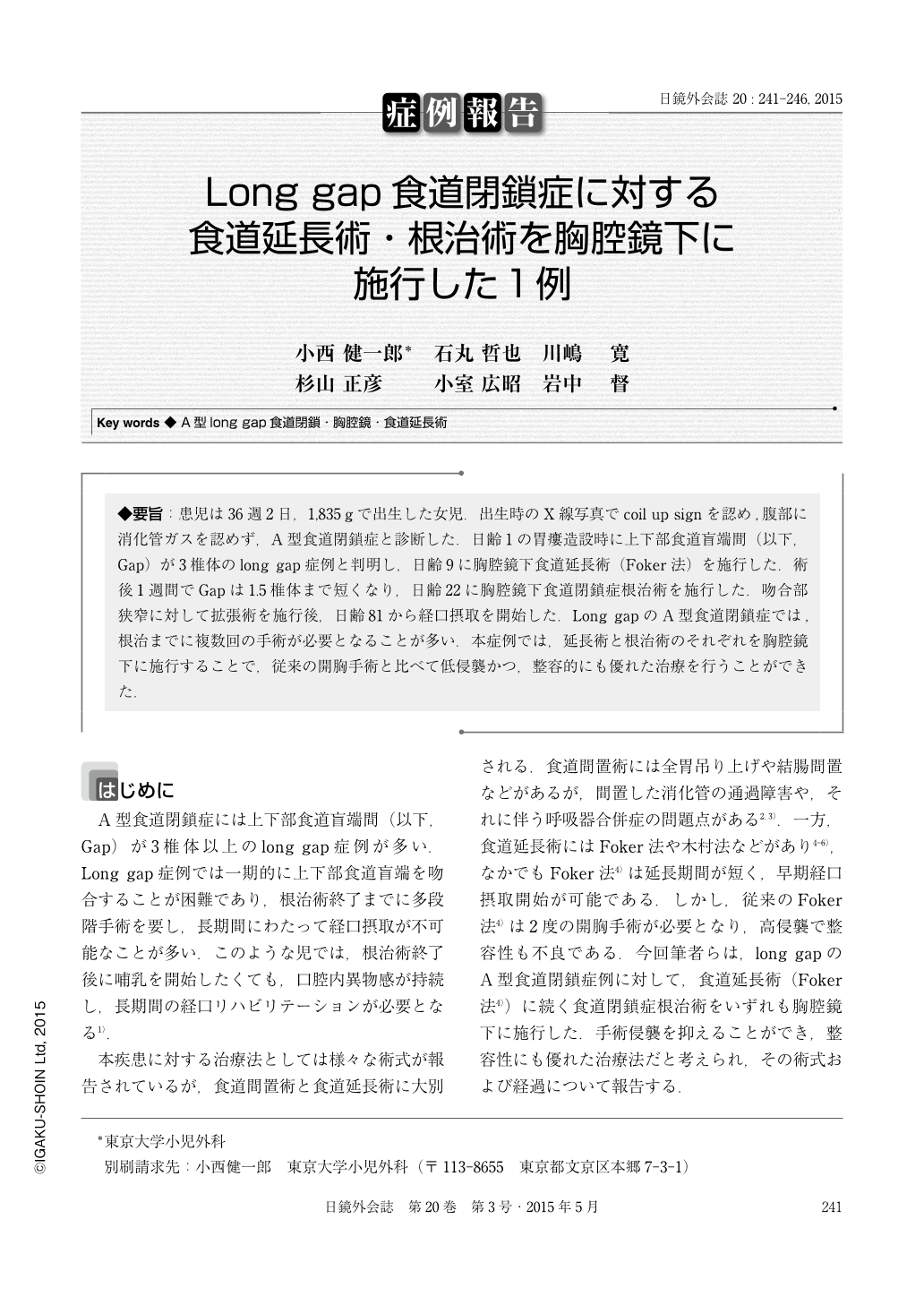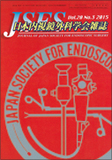Japanese
English
- 有料閲覧
- Abstract 文献概要
- 1ページ目 Look Inside
- 参考文献 Reference
◆要旨:患児は36週2日,1,835gで出生した女児.出生時のX線写真でcoil up signを認め,腹部に消化管ガスを認めず,A型食道閉鎖症と診断した.日齢1の胃瘻造設時に上下部食道盲端間(以下,Gap)が3椎体のlong gap症例と判明し,日齢9に胸腔鏡下食道延長術(Foker法)を施行した.術後1週間でGapは1.5椎体まで短くなり,日齢22に胸腔鏡下食道閉鎖症根治術を施行した.吻合部狭窄に対して拡張術を施行後,日齢81から経口摂取を開始した.Long gapのA型食道閉鎖症では,根治までに複数回の手術が必要となることが多い.本症例では,延長術と根治術のそれぞれを胸腔鏡下に施行することで,従来の開胸手術と比べて低侵襲かつ,整容的にも優れた治療を行うことができた.
A girl was born at 36 weeks of gestation weighing 1,835 g. She was diagnosed with Type-A esophageal atresia by chest and abdominal x-ray. When she underwent a gastrostomy on day one after birth, she was diagnosed as having a gap length of 3 vertebrae. Thoracoscopic elongation surgery(modified Foker technique) was performed at 9 days old, and her weight was then 1,669 g. The gaps were shortened by 1.5 vertebrae in one week. Radical thoracoscopic repair for esophageal atresia was performed at the age of 22 days when her weight was 1,952 g. For postoperative anastomotic stenosis, balloon dilation was performed, and then, she started taking milk orally. Type-A long-gap esophageal atresia commonly requires elongation surgery followed by radical surgery or esophageal replacement after weight growth. Elongation surgery(Foker technique) required two open procedures previously, but we performed both elongation surgery and subsequent radical surgery thoracoscopically. Therefore, we kept musculoskeletal problems to a minimum, and her parents are also satisfied with the cosmetic appearance of the three small wounds.

Copyright © 2015, JAPAN SOCIETY FOR ENDOSCOPIC SURGERY All rights reserved.


